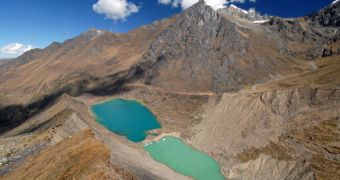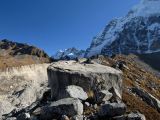Experts at the University of New Hampshire (UNH) have recently demonstrated that variations in climate over the Northern Hemisphere in the past 12,000 years are tightly linked to changes recorded all the way to the tropics, and as far as Peru. In a research paper published in the latest issue of the top journal Science, the team reveals that glacier advancements in Europe and North America, recorded thousands of years ago, have affected weather patterns on and around the tropics, the National Science Foundation (NSF) reports.
“The results bring us one step closer to understanding global-scale patterns of glacier activity and climate during the Little Ice Age,” UNH glacial geologist Joe Licciardi, who has also been the lead author of the new study, explains. The Little Ice Age is the name given to a period between 1650 AD and 1850 AD, when glaciers in the Northern Hemisphere reached their modern-day maximum. Since then, the formations have been constantly receding, as more and more greenhouse gases such as methane and carbon dioxide are being pumped into the atmosphere.
Geoscientists are very keen on deciphering precisely how glaciers used to move over the past 12 millennia, since the advent of agriculture, and a more modern human society. If experts can paint a clear picture of these changes, then they could potentially create a thorough prediction of how the mountaintop glaciers would respond to climate change and global warming. The UN Intergovernmental Panel on Climate Change (IPCC) predicts that global temperatures may rise by as much as 1.1 to 6.4 degrees Celsius within the next 90 years, which would essentially spell disaster for millions.
“If the current dramatic warming projections are correct, we have to face the possibility that the glaciers may soon disappear,” Columbia University Lamont-Doherty Earth Observatory (LDEO) geochemist Joerg Schaefer, who is also a co-author of the Science paper, explains. Millions of people around the world depend on glaciers for their drinking water, farmland irrigation and electricity, and most of them don't even know it. If glaciers in the Northern Hemisphere melt, then all these people could be forced to find alternative sources of water, such as aquifers.

 14 DAY TRIAL //
14 DAY TRIAL // 
